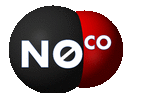|
Carbon monoxide is the by product of burning gas, wood, propane, charcoal, kerosene or other fuels. Improperly ventilated appliances, engines, or fireplaces, particularly in a tightly sealed or enclosed space, may allow carbon monoxide to accumulate to dangerous levels. Burning charcoal, running cars and the smoke from cigarettes also produce carbon monoxide gas. See the slideshow above for possible sources of CO.
Gas, oil, coal and wood are sources of fuel used in many household appliances, including:
|
|
Incorrectly installed, poorly maintained or poorly ventilated household appliances, such as ovens, heaters and central heating boilers, are the most common causes of accidental exposure to carbon monoxide.
The risk of exposure to carbon monoxide from portable devices may also be higher in trailers, motorhomes, boats and mobile homes.
Other possible causes of carbon monoxide poisoning include:
The risk of exposure to carbon monoxide from portable devices may also be higher in trailers, motorhomes, boats and mobile homes.
Other possible causes of carbon monoxide poisoning include:
- Blocked flues and chimneys – this can stop carbon monoxide escaping, allowing it to reach dangerous levels
- Burning fuel in an enclosed or unventilated space – for example, running a car engine, petrol-powered generator or barbecue inside a garage, or a faulty boiler in an enclosed kitchen
- Faulty or blocked car exhausts – a leak or blockage in the exhaust pipe, such as after heavy snowfall, could lead to a build-up of carbon monoxide
- Paint fumes – some cleaning fluids and paint removers contain methylene chloride (dichloromethane); this substance is broken down by the body into carbon monoxide
